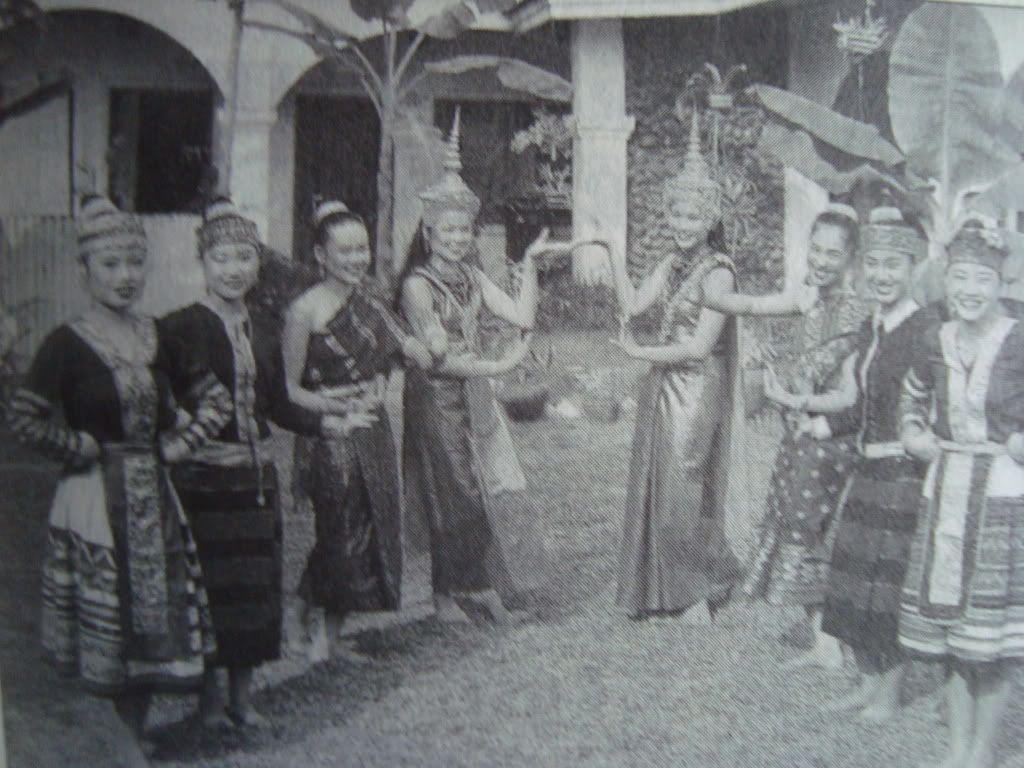But how might these be demonstrated in art, especially art that isn't going for jingoism or saccharine Hallmark bumper stickers?
For Lao American poetry, we can consider how all of these fit into the 5 precepts of Buddhism, although this is not absolute. Speaking as a writer of speculative poetry, we gain latitude in the idea that we can speak of all of these items, but, when discussing them, be unflinching regarding the deeper inner truths. At least as far as we can appreciate it. We can examine the fantastic, the mythic and the possible or far-fetched, but also probe towards something greater that conveys understanding of ourselves within an uncertain cosmos.
Beyond the legends of our Ramakien, Phra Lak Phra Lam, the Lao never elevated warriors to the level of other cultures. But there is still much we can learn from the disciplines and theories of the martial arts for our poetic practice.

In previous discussions, we examined the idea of iaido as a model for poetic practice. Although my description veers towards oversimplification of the art, the notion is: From a meditative position (whether walking or sitting meditation) mind, body and spirit become one. In a single elegant motion, one can perceive the opponent, draw the blade, in a single stroke deliver a decisive cut, clean the blade and finally return it to its scabbard. All of this ideally without even missing a beat.
In actual practice of course, it rarely goes anywhere close to as smoothly as that. So, too with poetry. But that does not necessarily mean it is not an ideal worth pursuing.
If we take the symbolism of iaido, at its core, when we practice calligraphy or the composition of a poem, it will be done within one sitting. All of the sufficient ink, paper, and ambiance of the room where we compose the word or poem are perfectly attuned to the occasion. We would successfully write a poem without need for revision on the first try, and it would be appreciated by its reader at many levels, fundamentally transforming them.
But here is where the art gets interesting, because as I've taught my students, the arts are one of the only fields where your flaws can still have merit and interest. A doctor or a lawyer who "bungles" a moment can cost a life or get someone sent to death row. That's pretty serious. Most other professions, like plumbing, carpentry, etc. also have significant consequences for imperfect practices. But the arts are curiously more playful.
True art is elusive but sublime when fully encountered. It has emotional variance and alternates between the overt and the subtle. It transforms and preserves. But a flawed work can hold as much interest and inspire new work by both the artist and others, if presented properly.
This is not to say all art is magnificent or true art, but so long as we learn from the encounter with even flawed art, there is something transformative.

Moving back to the discussion of iaido, I wonder if one might notice a difference between the poems that emerge from practitioners of Kashima Shinden, Yagyu Shinkage, Kogen Itto Ryu, or the Tennen Rishin Ryu. Not every practitioner was called to poetry, and of these, it is hard to say how many excelled at it in the eyes of their peers or future generations.
But of what we have, if it were possible to consider their works, would we see a reflection of how their journey through these arts changed them over time?
Consider for example, the ideals of Kashima Shinden. A cursory examination of their approach suggests that the repetition and practice of the art strengthens and helps a practitioner to attain a connection to the cosmos. They seek unwavering intention, perfect clarity of mind to attain fudoshin, the immovable heart. Contrast that with the methods of the Yagyu Shinkage schools, who often consider the environment: Geography, time and other factors. They have often sought to understand hidden inner secrets of conflict, striving towards adaptability and correct anticipation, analysis and decisive actions. A central tenet of the Yagyu Shinkage is said to be "Act with the mind to act with the body." So many possibilities of how these principles might exert themselves with a swordsman's poems. And vice versa.
Something I'm pondering at the moment.
No comments:
Post a Comment